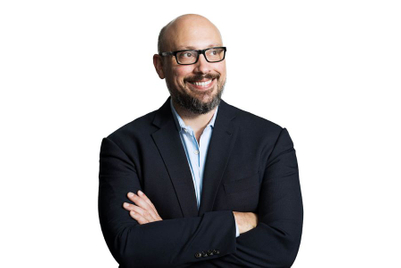
Speaking at an event held by TV marketing body Thinkbox on Friday (23 March), Sharp said to grow, brands needed to reach people who don't buy their category very often. However, Facebook fans "skew massively to the heaviest buyers, the people who are the easiest to reach".
Sharp said: "They see you more often, they notice everything you're doing. You should pay less to reach those people. TV reaches your normal category buying base, but earned media skews to your heaviest buyers. It therefore, is a lower quality media."
The Ehrenberg-Bass Institute is part of the School of Marketing at the University of South Australia and has one of the largest numbers of marketing scientists in the world. Its corporate sponsors include Coca-Cola, Unilever and Procter & Gamble.
Sharp said earned media such as Facebook is "very sexy at the moment" but it skews toward heavy buyers of a product, while marketing tactics that skew toward light buyers are of "great strategic value".
He said TV has a higher value than earned media because it reaches a brand's normal category base, while higher rating TV shows are even more valuable because they have a higher proportion of people who are light TV viewers.
Presenting as part of an event for around 200 people from the media, marketing and advertising industry at Bafta in central London on Friday morning (23 March) Sharp said growth comes from people who do not buy the category very often.
To demonstrate how big brands are built by the people who buy them infrequently, Sharp used the example of Coca-Cola.
In 2005, British Coke buyers bought an average of 12 cans of Coke each, but Sharp said that figure was skewed by the people who drink Coke "morning, noon and night".
In fact, less than 5% of buyers bought 11 to 13 cans during 2005, and a typical Coke buyer (around half) only bought one or two cans over the entire year.
Sharp said: "Who is [the] typical buyer? If you're Coke it's them. That's half your customer base. And that's a big brand. All big brands have a skewed distribution like this, with the vast bulk of their customers down that end.
"It reminds us why Coke advertises. Because what do Coke ads say? They say 'Enjoy Coke'. They've said the same thing for decades. They spend an enormous amount of money telling us the same thing.
"Who is Coke advertising to? It's the millions of people down that end that buy a Coke once or twice a year. These are the people Coke needs to jump in front of and say: 'Hey, you know us – why don't you buy us?'"
This article was first published on mediaweek.co.uk


+(900+x+600+px)+(3).png&h=334&w=500&q=100&v=20250320&c=1)

.jpg&h=334&w=500&q=100&v=20250320&c=1)




+(900+x+600+px).jpg&h=334&w=500&q=100&v=20250320&c=1)
.jpg&h=334&w=500&q=100&v=20250320&c=1)





.jpg&h=268&w=401&q=100&v=20250320&c=1)


